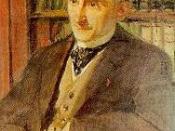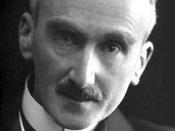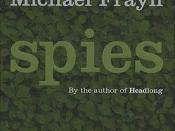From sardines to booze, an axe to flowers, and form to farce; Michael Frayn's "Noises Off" is a tantalizing script and a thrill for the eyes. The script has taken three forms: written, dramatic and visual, though each one is unique in its own right. Each version brings to life a new piece of the story creating, essentially, three different stories depending on how you perceive each one. Through my evaluation of each, I propose that the dramatic representation of Frayn's "Noises Off" is far more telling than that of the written or visual manifestations.
The written tradition came first among the three I've chosen to analyze, so why then is it not the best representation? After all, you'd think that a written version would be the most detailed considering that stage directions, specific props, costumes and outlines of the characters are included. What makes it less than its dramatic cohort? There are many aspects to this play that bring it to life, one being the fact that it could be classified as a farce.
A farce is a comedy based on timing, speed, or tempo. The quicker a joke can get out to the audience the better, especially when it's one joke after another building on top of each other. As noted before, in the written tradition of a script many aspects are included that you must read but in the dramatic or visual manifestations the words are replaced by images...something that the audience barely even registers. For example in a script the author will note who moves where, when they do it and what, if anything, they are carrying with them as they do so. In a visual or dramatic version the audience can see this action and does not have to take away from...


